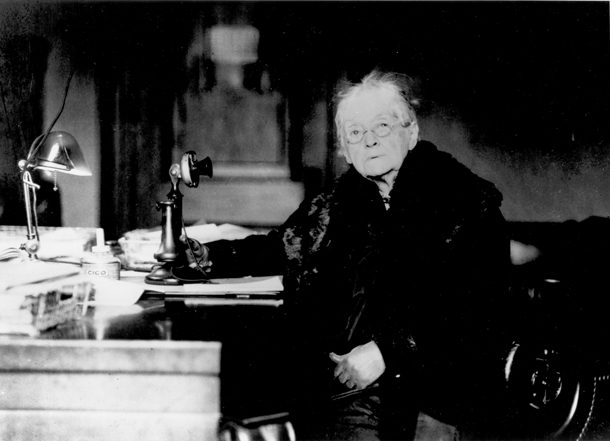Who keeps the US running? Half of the time, it’s the US Senate, an elected body that makes up an important chunk of the American government.
It is the Senate that helps to protect and ensure the democracy of the country. The Senate has been around for centuries – without it, arguably, the country wouldn’t run as we all know and expect it to!
But how much do you know about this body of government? Here are some of the most interesting facts about the US Senate, with a few surprises thrown in that you might not expect. Let’s dive in!
1. The US Senate is younger than you might think.
The US Senate was officially established in 1789 – it’s a few hundred years old, but remember that America is still a relatively young country!
It was established in the US Constitution and is one of the two chambers of what’s known as US Congress. The other is the House of Representatives.
The Senate held its first-ever session on March 4, 1789, and has met regularly to discuss policy ever since.
2. Each state is represented via the Senate.
In order to make the US Senate as fair as possible, each state is represented by two Senators. This is the case regardless of how many people live in the state.
This has been quite a controversial point about the US Senate, with many more densely populated states believing they should have more representation in the Senate to reflect diverse and growing populations.
However, for now, given that there are a total of 50 US States, there are a total of 100 Senators who convene regularly on constitutional matters. Could this change? We’ll have to wait and see.
3. Each senator serves for six years.
A senator must be at least 30 years old and have been an American citizen for at least nine years to be elected to the Senate, and each serves a six-year term – regardless of who’s in charge of the White House!
That being said, Senate elections are staggered. There is approximately one-third of the Senate up for election every two years, meaning there’s no guarantee a senator will sit for their maximum term.
There’s a reason behind this – it’s because the Senate is considered a continuous body. This means that since only one-third of its members are up for election at any given time, the overall body of the Senate is always intact and in place. It’s a way to mitigate chaos!
A Senator’s terms begin on January 3 following their election.
4. Senators must live in the states they represent.
Pretty reasonably, it should come as no surprise that senators are expected to live in the state they represent! In fact, senators must reside in the state they represent at the time of their election.
The only member who is the exception to that rule is the President of the Senate, who has to live in Washington, DC.
5. The Senate is led by the Vice President of the US.
Indeed, it is the Vice President of the United States who serves as the President of the Senate. It’s one of the biggest perks of being second in command! However, the Vice President only ever votes to break ties within the Senate.
If the Vice President is absent, the Senate elects a “President pro tempore” to preside instead. This is rarely the case, however!
6. There are majority and minority parties in the Senate.
The majority party is the political party with the most seats in the US Senate. The Majority Leader, therefore, is the chief spokesperson for the majority party and is also typically seen as the Senate’s leader.
On the other hand, the Minority Leader serves as the chief spokesperson for the minority party, i.e., the party with the lowest number of seats in the Senate. Therefore, you have two main figureheads going toe-to-toe on debates and votes.
7. The US Senate is made up of lots of different committees.
Just to make things even more confusing, the Senate has numerous committees that handle specific areas of legislation.
For example, there is a committee that handles finance, another that handles foreign relations, and more besides.
The Senate currently has 16 standing committees. Chairs are usually selected based on seniority and party leadership. Right now, there are 24 different committees, with four being joint committees, and another four being select committees.
8. The Senate also runs trials!
In serious cases, the Senate also conducts impeachment trials for federal officials. Each trial needs a two-thirds vote to convict.
The Senate also has the authority to conduct investigations into governmental and societal issues. Perhaps the most high-profile trials in recent years have surrounded Donald Trump’s two impeachments while in office.

9. Senators earn very well indeed!
It’s little wonder so many people love making laws in the US – senators can earn around $174,000 every year on average.
Of course, being a US Senator comes with other perks than just the high salary. For example, they get complete medical, vision, dental and life insurance, along with annual leave and federal holidays.
And, many also have flexible spending accounts in order to conduct their business – similar to how members of Parliament in the UK have expenses.
10. Hiram Revels made Senate history.
Hiram Revels was the very first African American Senator, serving in the Senate from 1870 to 1871. Not a long term, but an important one, nonetheless!
As of today, there have only been 11 US Senators of African American descent. Three of those Senators are currently serving at the time of writing!
11. Robert Byrd also made history in the US Senate.
Robert Byrd represented the state of West Virginia and still holds the record for the longest-serving senator!
Incredibly, he served the Senate from January 3, 1959, to June 28, 2010! In fact, he only stopped serving when he died at the age of 92. This means that he served as a Senator for 51 years!
Byrd, however, was a contentious figure – he recruited people to form a chapter of the Ku Klux Klan in the 1940s. Therefore, many saw his passing as the end of an era.
12. The Senate wouldn’t have a woman serving until the 1920s.
It was on November 21, 1922, that Rebecca Felton became the first woman to serve in the US Senate.
However, this victory was short-lived, as she only served for one day! Although she was a fierce fighter for the suffragette movement and helped to pave the way for women in US politics, she was also a staunch white supremacist and known slave owner – a fact that has rightfully tarnished her reputation over the years.
Today, only 60 women have ever served in the US Senate.

13. US Senators used to be elected very differently.
US Senators used to be elected by state legislatures. That was the case until the 17th Amendment (1913). The amendment mandated direct election by voters for US Senators, a change that has remained ever since.
14. All bills must go through the Senate.
In order for a proposed bill to become law, it must pass both the Senate and the House of Representatives – they’re the gatekeepers of Congress who decide if the Constitution should be amended.
The Bill must then be signed by the US President – until all of these steps are completed, bills hang in the balance – which can mean it’s rather difficult to create new laws and statutes!
15. The US Senate has its own seal.
It may also come as no surprise to you that the US Senate has its own official seal. The seal features a shield, crossed fasces, an olive branch, and a scroll inscribed with “E Pluribus Unum.”
This Latin sentence holds much meaning for the Senate and the entire country, as it means “Out of many, one.”
16. The Senate chamber is classically designed and decorated.
In keeping with tradition, the Senate chamber is decorated in a neoclassical style, featuring marble and mahogany.
In fact, the Senators’ desks in the chamber date back to the 19th century! Some even include historical inscriptions and signatures!
The Senate meets in the north wing of the US Capitol in Washington, DC., an area which is usually open to the public for viewing, but more on that later!

17. Every senator can vote.
One of the main differences between the Senate and the House of Representatives is that everyone in the Senate has the power to vote.
The reason why the House has non-voting members is simply because there are territories and areas such as the District of Columbia that don’t hold the right to make and pass laws on US soil.
What’s more, senators also have the power to make bill amendments during hearings.
18. The Senate has pages – effectively school support.
The Senate also employs people known as pages. These people, who are typically high school juniors, assist with day-to-day operations within the Senate.
Some of the common duties of pages include delivering correspondence, preparing the Chamber for session, and carrying various bills to the desk.
To be a page in the US Senate, you must be between the ages of 14 and 17. It’s seen as a great opportunity for young people to gain up-close experience and insight into how the US judicial system works!
19. The US Senate follows a strict calendar.
The Senate follows a legislative calendar to schedule and organise activities and sessions to keep things orderly.
What is known as the Senate’s Calendar of Business is updated every time the Senate is in session. Most things are placed under “General Orders” and treated in the order in which they appeared on the calendar, i.e., when they were added.
However, in some circumstances, special situations are noted differently to be addressed sooner.
20. There’s an amusing meaning behind the word “senator.”
Believe it or not, “senator” isn’t a made-up word. It actually derives from Latin, specifically, the word “senex.”
What does “senex” mean? “Old man” – could this have been a prescient commentary on the number of older male figures taking care of legislation in the modern era? Maybe not – but it’s pretty funny all the same.
21. It’s possible to watch Senate proceedings live on TV.
If you’re really into your US judicial procedures, it’s possible to kick back, relax, and watch Senators conduct their business live through C-SPAN.
C-SPAN is the designated network for broadcasting Senate sessions, and over the years, it’s adapted to online streaming, too. In fact, C-SPAN has broadcasted sessions from the Senate ever since 1986 – that’s around four decades of hearings and political drama! Better than watching Catfish or Real Housewives, right?
22. It’s possible to become a senator after serving as US President.
Just because your US Presidency comes to an end, doesn’t mean your political career has to grind to a halt. Former Presidents are entitled to run for other offices at the end of their terms.
That said, only two former Presidents have ever successfully ran for Congress. In the Senate, former US President Andrew Johnson, who served as head of the country until 1869, was elected as a Congressman from 1875, passing away during his tenure.
Over in the House, John Quincy Adams became a Congressman, serving from 1848, some nine years after he was defeated at a general election.
23. Many people are still under-represented in the Senate.
Although the number of people from the LGBTQ+ community serving in Congress is growing, there are still relatively few people representing people in either the Senate or the House.
In fact, only two people in the Senate, at the time of writing, are openly LGBTQ+. In the House, meanwhile, there are 11 people identifying as such. Could this change in the years to come?
24. A senator’s career can go on, and on, and on…
Remember we mentioned that each senator can serve a maximum of six years per term in Congress. That doesn’t mention the fact that terms are unlimited. It’s how Senators such as Robert Byrd managed to hold office for decades!
Therefore, someone entering the Senate now at 30 years old could challenge Byrd’s record if they live to serve their state for the next 56 years – but are lucky enough to keep getting re-elected!

25. Senators can represent different states, and Shields took this to the extreme.
To this date, senator James Shields holds the record for the most states represented by a single person in the US Senate.
Records show that, at the end of the 19th century, Shields represented not one, or two, but three different states during his political career. Specifically, he represented Minnesota, Illinois, and Missouri. How’s that for political ambition?
26. Want to time out a bill? Use a filibuster.
Filibuster laws in the Senate effectively allow senators to delay or even block bills passing by dragging processes out for as long as possible – by continuing to debate them!!!!
The longest filibuster ever recorded in the Senate belonged to the infamous Strom Thurmond, who decided, in 1957, to filibuster against the hugely important Civil Rights Act.
Thurmond, determined to delay the bill’s progress, spoke for a staggering 24 hours and 18 minutes in total. Thankfully, despite Thurmond’s stamina, the act still passed.

FAQs About the US Senate
Who is the leader of the Senate?
At the time of writing, in the US Senate, the current leaders are Chuck Schumer of New York for the Democrats and Mitch McConnell of Kentucky for the Republicans. The current assistant leaders, also known as whips, are Dick Durbin of Illinois for the Democrats and John Thune of South Dakota for the Republicans.
What is the difference between Congress and the Senate in the US?
Simply put, the US Senate is part of the US Congress. Paired with the US House of Representatives, the Senate makes up the Congress. It’s equivalent to the House of Lords and the House of Commons making up the UK’s Houses of Parliament.
However, the Senate holds different powers and responsibilities than the House of Representatives. What’s more, there are territorial members in the House who cannot vote.
How old is the youngest senator ever?
Despite the fact that senators need to be at least 30 years old in order to serve, certain senators under that age were elected in the 19th century. For example, John Henry Eaton was 28 years old when he became a US senator. He was the youngest senator in US history, and his record has thus far not been broken – because the law has otherwise been followed to the letter.
However, it is important to note that the age of senators is increasingly becoming a topic of debate for people all over the US. Many believe that while that is an age limit on how old senators must be to start serving, there should also be a maximum age on how old they can be to serve on the US Senate.
Do you know any fun facts about the US Senate? Share them in the comments below!











